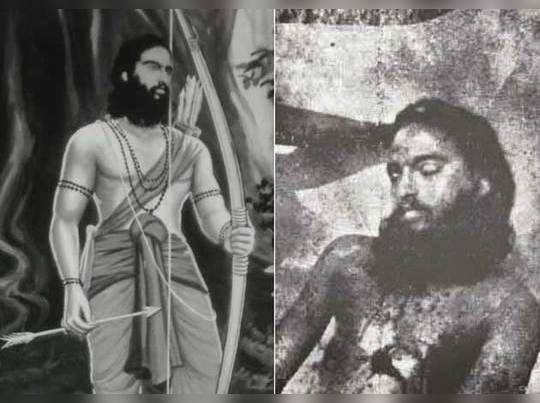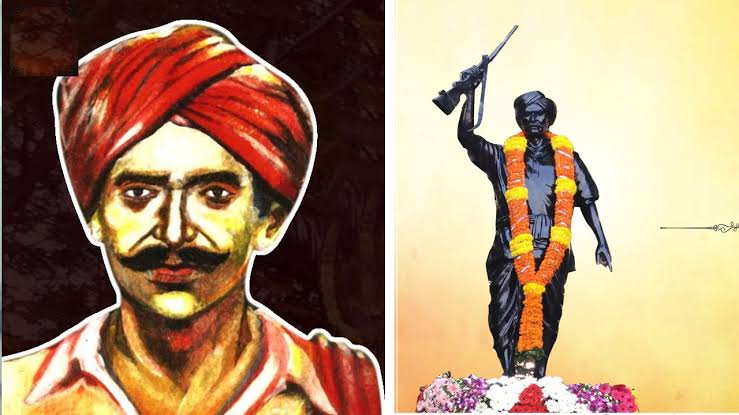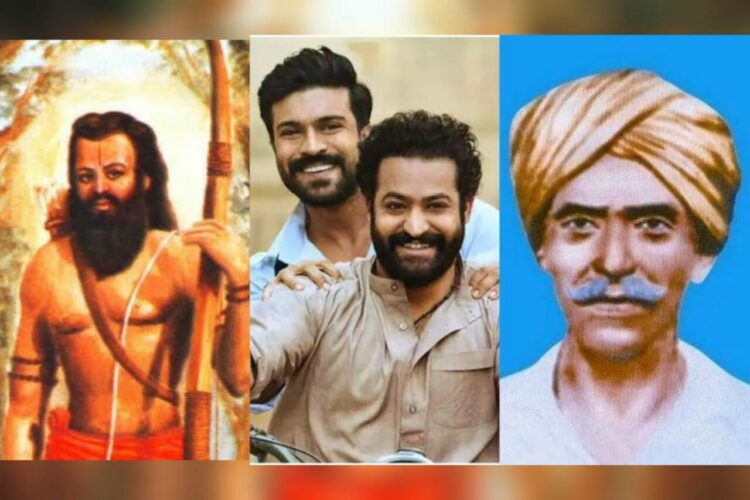Song ‘Naatu Naatu’ brought the Academy Award the other day for being the best original song. It is a big moment for the creators and the whole country. The movie RRR is a fictional movie that draws inspiration from two real-life revolutionaries Alluri Sitarama Raju and Komaram Bheem.
Apart from the famous hook step from the song Naatu Naatu, here is all you need to know about the film RRR.
Both these revolutionaries were born in the southern part of the country. Alluri Sitarama Raju was born in Andhra Pradesh whereas Komaram Bheema was born in the then Hyderabad state. They both fought their battles against the British-colonial regime.
Rajamouli during an interview said, with the fictional cross-section between these two real-life revolutionaries he wanted to show how Andhra Pradesh and Telangana are one and united.
Meet Alluri Sitarama Raju
Alluri Sitarama Raju was an Indian revolutionary who waged a war against the British-colonial rule in India. He was active in fighting the British following the 1882 Madras Forest Act, which restricted Adivasi’s freedom of movement in their natural habitats and banned them from engaging in their traditional style of agriculture, known as ‘podu’.
Raju was born in modern-day Andhra Pradesh. He also headed the Rampa Revolt of 1922, the revolt was the result of growing anti-British sentiment. In the border districts of the former Madras Presidency, he organised united troops of Adivasis, farmers, and other sympathisers to fight guerilla warfare against the British (now parts of East Godavari and Visakhapatnam). He was given the name “Manyam Veerudu” (Hero of the jungle) by the locals.

Raju, who was Telugu-speaking and took up sannyasa at the age of 18 to become a popular and charismatic leader of the oppressed tribal people in colonial India throughout the 20th century. Alluri led his forces in the Rampa Revolt of 1922 against the colonial rulers with the intention of driving them out of the Eastern Ghats region, leveraging on widespread discontent against British colonial rule at the backdrop of the 1920 Non-cooperation movement.
He conducted multiple gun attacks on the imperial police stations throughout this revolution to supply his under-armed forces.
Interestingly, He would leave a letter behind after each raid notifying the police about the specifics of his loot there, including information on the weapons he parted with, and dared them to stop him if they could.
The British colonial authorities conducted a nearly two-year-long quest for Alluri in reaction to these incursions and to put a stop to the uprising. This cost them almost 4 million rupees at the time. He was eventually captured by the British in 1924 at the village of Koyyuru in the Chintapalle jungles. He was apprehended there, bound to a tree, and ruthlessly killed by a firing squad.
The place where he was interred permanently is in Andhra Pradesh, near Krishnadevipeta.
About his family, his mother, Surya Narayanamma, was a devout homemaker, while his father, Venkata Rama Raju, was a skilled photographer who settled in Rajahmundry for his line of work. Raju completed his primary education and joined High school in Kakinada, where he became a friend of Madduri Annapurnaiah (1899–1954), who later grew up to be another prominent Indian revolutionary.
Mahatma Gandhi paid his tribute to Alluri’s life, saying, “Though I do not approve of his armed rebellion, I pay my homage to his bravery and sacrifice.”
“Raju was one of those rare heroes that could be counted on fingers,” said Jawaharlal Nehru. Alluri was observed by Netaji Subhas Chandra Bose to be fiery in his resolve, and his unmatched bravery and sacrifice for mankind will assure him a place in history.
Meet Komaram Bheem
A leader from the Gond tribes, Komaram Bheem was a revolutionary in the Hyderabad State of British India. In the 1930s, Bheem and other Gond leaders staged a low-intensity uprising against the feudal Nizams of Hyderabad in the eastern section of the princely state. This uprising helped to pave the way for the Telangana Revolt, which broke out later in 1946.
Bheem was born in Sankepalli, near Asifabad in Hyderabad State, British India to a family in the Gond tribal community. He was born on October 22, 1901.
Bheem was raised without access to a formal education in the tribally populated forests that make up the ancient Chanda and Ballalpur kingdoms. Throughout his life, he continued to travel as the Gondi people were extensively exploited by zamindars (landlords) and businessmen, as well as by the extortion of the jangaalat police (forest police).
During the 1900s, when the mining activities expanded and state authority was strengthened in the Gondi region several regulations were introduced that hampered the Gondis’ subsistence activities. Zamindars were given lands in their regions and several taxes were imposed on the subsistence Gondi podu farming activities. Bheema and his family led to several protests against these activities. Bheem’s father was killed by forest officials in one such incident.

Following the death of his father, Bheem and his family moved out to Sankepalli to Sardapur near Karimgara (a place in now Telangana). The Gonds who had immigrated to Sardapur settled on the desolate land owned by the zamindar Laxman Rao; they started out by farming there for subsistence and later became a target for taxation.
In an altercation in October 1920, Bheem assassinated Siddique Saab, a senior Nizamate official who had been ordered by Rao to enforce the seizure of crops during the harvest. Along with his buddy Kondal (also known as Routa Kondal, Komaram Kondal or Edla Kondal), he fled on foot to the city of Chanda in order to avoid capture. The two were given shelter by a local publisher named Vitoba, who oversaw a printing plant and distribution system across the regional railroads for a journal that was anti-British and pro-Nizamate. English language proficiency was acquired by Bheem.
After Vitoba was detained, Bheem was once more compelled to flee, this time to a tea estate in Assam with a friend he had met at the Manchiryal train station. He spent four and a half years working on the plantations. He got involved in labour union activity while doing this, which led to his incarceration. Within four days, Bheem broke out of jail, boarded a cargo train, and travelled back to Balharshah in the Nizamate.
Bheem decided to start his own campaign for the rights of the Adivasis when he returned to the Nizamate because he had heard of Ramji Gond as a boy. Bheem and his family relocated to Kakanghat, where he began working for Lacchu Patel, the leader of the Devadam village. use his expertise
Bheem travelled to Bhabejhari in the interior of the Gond kingdoms after getting married to Som Bai, where he settled down to farm a plot of land. He was once more approached by forest officials during harvest season, this time attempting to forcibly remove him by claiming that the area belonged to the state. Thereafter, Bheem attempted to approach Nizam personally in order to voice the Adivasi people’s complaints, but he was unsuccessful. Then, Bheem made the decision to launch an armed uprising. He began organising the Adivasi community at Jodeghat and secretly joined the Communist Party of India before convening a council of tribal chiefs from the twelve traditional districts of Ankusapur, Bhabejhari, Bhimangundi, Chalbaridi, Jodeghat, Kallegaon, Koshaguda, Linepatter, and others.
The council was followed by an uprising in the Gondi region which began in 1928. To assault the zamindars in Babejhari and Jodeghat, the soldiers gathered. In response, the Nizam acknowledged Bheem as the rebellious Gond leader and sent the Asifabad collector to talk with him while promising to provide the Gond’s land grants.
Bheem declined the initial offer, claiming that they were seeking justice, and requested instead regional autonomy for the Gonds, the expulsion of the zamindars and forest rangers, and the release of all Gond captives housed in the Hyderabad state prison system. The demands were turned down, and for the next ten years, a low-intensity guerilla war represented the conflict. Operating out of Jodeghat, Bheem had 300 soldiers under his direct command.
Kurdu Patel eventually tracked out Bheem’s whereabouts, and he was murdered during a shootout with armed police officers under the command of the talukdar of Asifabad, Abdul Sattar. In the fight, fifteen more people died. His death is officially acknowledged to have happened in October 1940, however, the Gondi people remember him on 8 April 1940.
After his death, Komaram Bheem was exalted to hero status as a representation of the Gond uprising, and throughout time, he was honoured in Adivasi and Telugu folk songs. Through the worship of Bheemal Pen, Bheem has become a deity among the animistic Gond Adivasi group. The Gonds have a ceremony at Jodeghat, the location of his death and his main base of operations during the revolt, to mark the anniversary of his passing on Aswayuja Powrnami every year. His assistants Bhadu master and Maru master are thought to have played a key role in lionising him after his passing in order to inspire discouraged soldiers.
Both these heroes raised from the grassroot revolutionary activities were lost somewhere. Now with the unimaginable success of RRR, they found their lost credits. In the reel life, Jr NTR played the role of Komaram Bheem while Konidela Ram Charan Teja played the role of Alluri Sitarama Raju.



















Comments